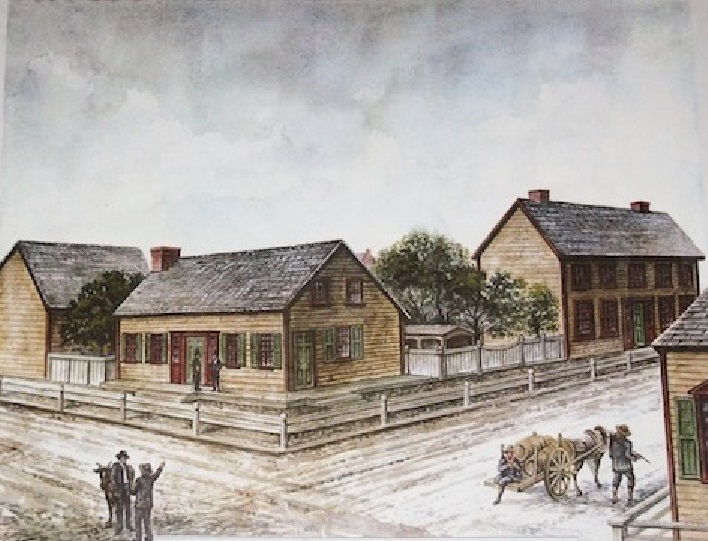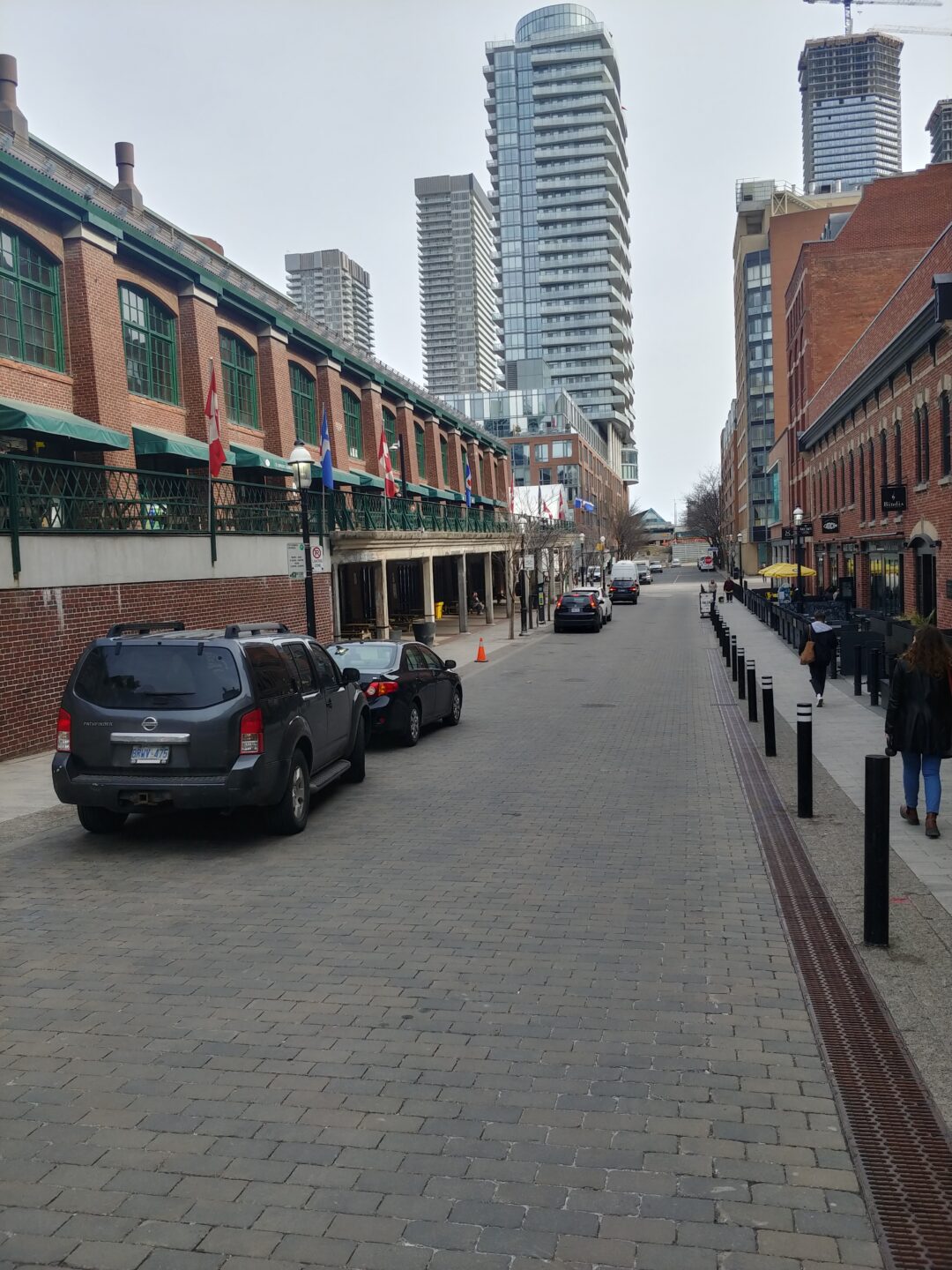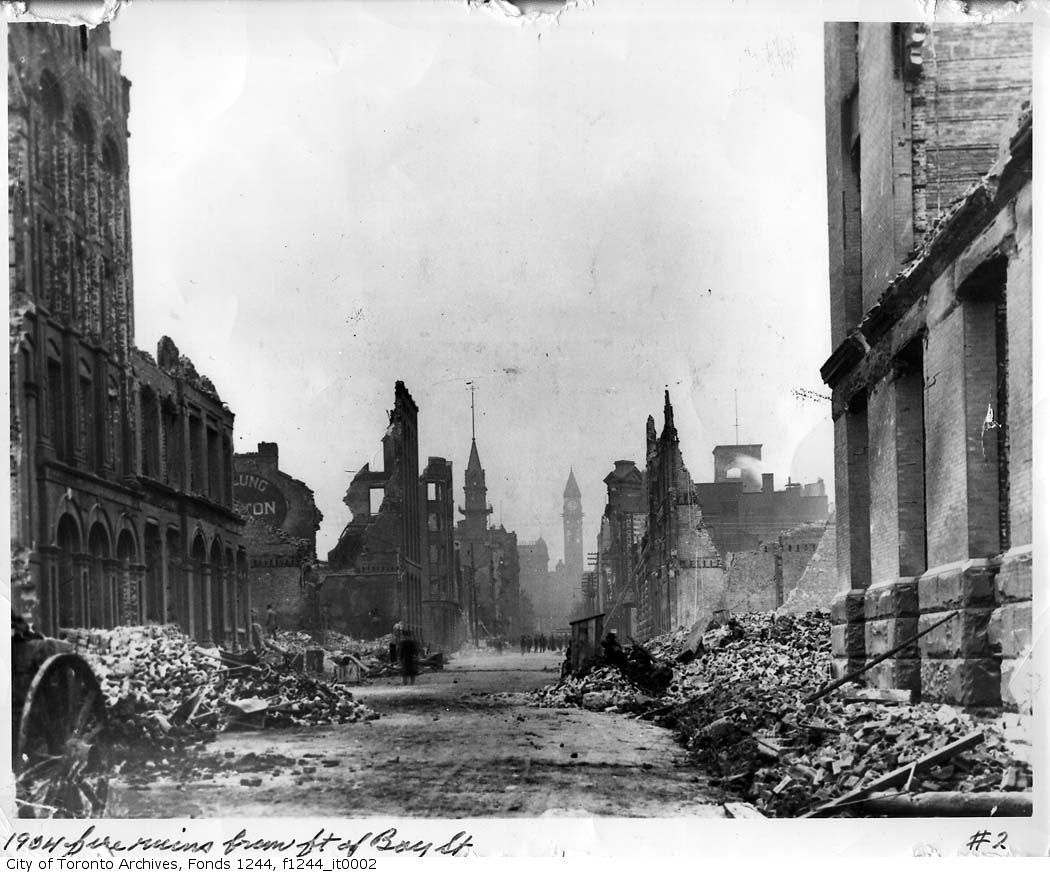Bruce Bell, History Columnist –
Front and Frederick Streets once stood one of the most famous homes in Canadian history. It was where the idea of the country being run by its people was born.
Three influential families lived in this little house between its construction in 1803 and its demise in 1855. The first to occupy the one-and-a-half storey wood frame house was the Baldwin family.
Patriarch William Baldwin was a doctor, a lawyer and the headmaster of the local boys school. His son Robert grew up to be one of the most celebrated men born in York. Robert Baldwin, along with Louis-Hippolyte La Fontaine, introduced the concept of responsible government to the British Parliament in 1848, which led to the creation of the Dominion of Canada in 1867.
Robert Baldwin was born in the newly founded Town of York on May 12, 1804, in a log cabin at Front and Frederick (between Jarvis and Sherbourne Streets). At the time, the word of the King was still the law of the land, and all proclamations and wars were made in his name.
The King in question was George III (reigned 1760-1820), who went down in history as the monarch who lost the American colonies during their 1776 Revolution.
Robert Baldwin, though he changed the course of Canadian history, was a romantic who preferred poetry to politics. In later life he was plagued by depression and ill health, never fully recovering from the death of his wife in 1836. He died on December 9, 1858.
In 1824 William Lyon Mackenzie and 10 family members moved into Baldwin’s wood frame house. Born in Dundee, Scotland, in 1795, Mackenzie immigrated to Canada when he was 25 and began publishing a newspaper, The Colonial Advocate.
In 1822, Mackenzie’s mother came to Canada, bringing Isabel Baxter as a bride for her son. Mackenzie and Isabel were married within three weeks of her arrival.
When the Mackenzies moved to York from Dundas, Ontario, they crowded into the upstairs of the little house at Front and Frederick. Below, William had his printing press used to publish his newspaper.
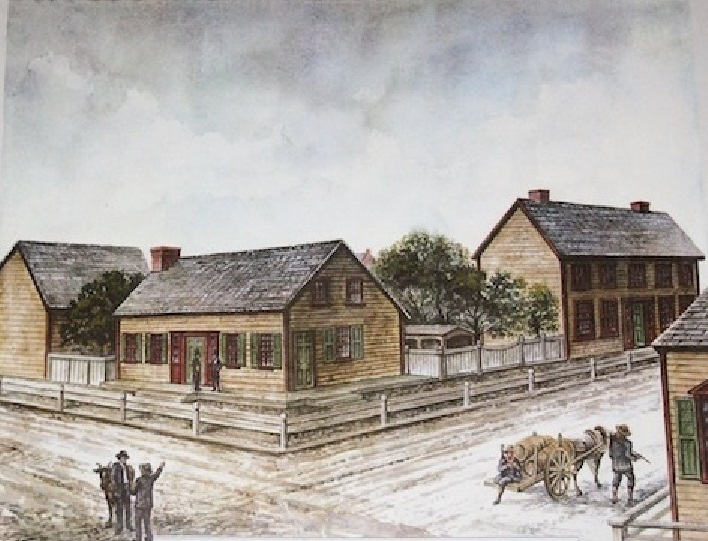
Illustration of Front and Frederick, 1826. Image courtesy of Toronto Archives.
In an article published in June 1826, Mackenzie attacked members of the upper class in what was called the Family Compact, publishing the scandalous private comings and goings of this powerful group.
Outraged at the article, younger members of the Family Compact broke into Mackenzie’s shop, smashed the printing press and dumped the remains into Lake Ontario – then across the street. However, Mackenzie sued and won enough money to keep from going broke.
The Types Riot is remembered today in a plaque on the Frederick Street side of the condominium that occupies the site.
William Lyon Mackenzie was elected as the city’s first mayor when York was incorporated into the City of Toronto on March 6, 1834.
Very much a firebrand, Mackenzie went on to instigate the ill-fated 1837 Rebellion against the Family Compact, which resulted in his exile to the United States. But he was brought back in 1849 by a forgiving public.
Of William and Isabel’s 13 children, only seven lived to adulthood. Their youngest child, Isabel Grace, became the mother of Prime Minister William Lyon Mackenzie King, born in 1874.
The next influential family to move into the house at Front and Frederick were the Cawthras, in 1828. Originally from Yorkshire, Joseph Cawthra had by the early 1790s become one of Northern England’s leading merchants during the early days of the Industrial Revolution.
Joseph arrived in York in 1802 and later made a fortune as an apothecary (druggist) after he opened a shop in Mackenzie’s former printing office. His son William (born in 1801) inherited his father’s small fortune and expanded it to become the richest man in Toronto.
William Cawthra and his wife Sarah lived in an enormous mansion (with solid gold door knobs) that at one time stood on the northeast corner of Bay and King Streets, today the site of the Scotia Tower.
When William died in 1880, he had no children to inherit his vast fortune, so it was divided between his many nieces and nephews.
One of his nephews, Cawthra Mulock, inherited eight million dollars at the age of 21, and went on to fund the still standing Royal Alexandra Theatre in 1906. Patriarch Joseph Cawthra lived in the little house on Front and Frederick until his death in 1842.
The log cabin burned to the ground in 1855. Its empty lot soon made way for a hotel, and then a stable and a factory until the present condo complex went up in 1984.
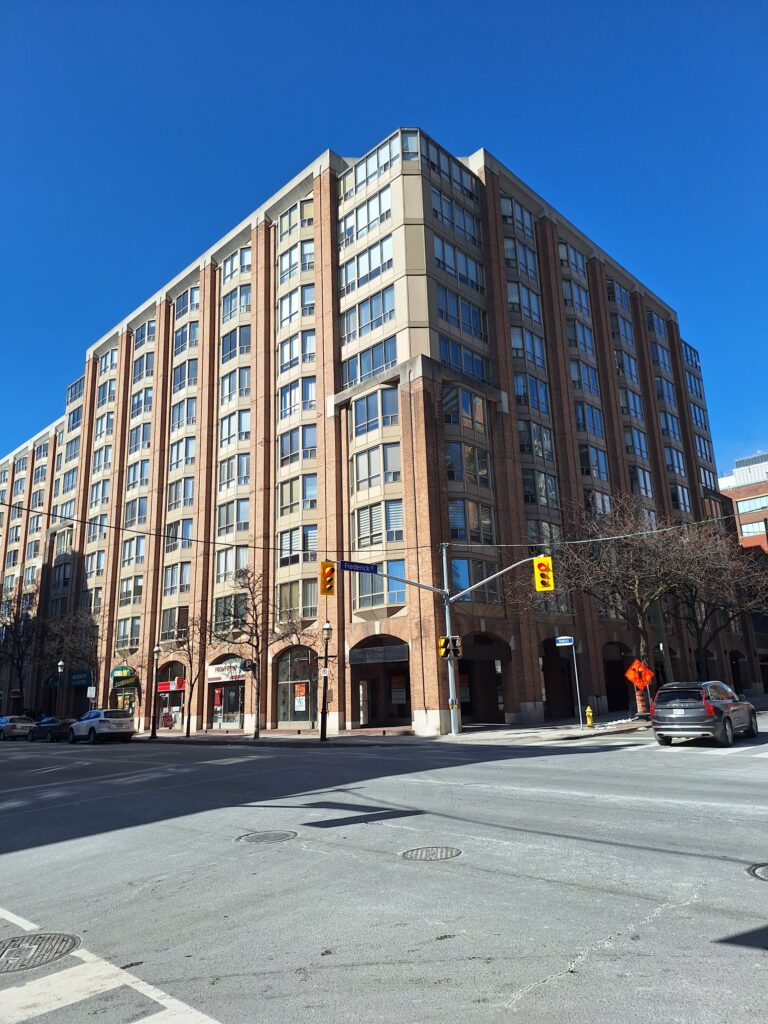
Present day corner of Front and Frederick Streets. Photo: Bruce Bell


